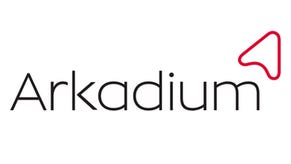Accessibility on a budget
Naughty Dog's Alexandria Neonakis offers a variety of easy (and some not so easy) things developers can do to make their games playable for more people
If one were to ask the average developer about whether they want their games to be accessible, the answer would probably be a very clear "yes." But relatively few games make much of an effort to be playable for those with physical or mental disabilities. Speaking at the Game UX Summit in Toronto last week, Naughty Dog UI designer Alexandria Neonakis said it's up to the user interface and user experience experts in the audience to change that.
"The reason I believe it's important for us to do it is because I strongly feel the goal of UI/UX is to make the product usable," Neonakis said. "And when you find out there are people who can't use our game, particularly because of a UI thing, I do believe that's our problem to solve."
Fortunately, some of the problems facing users can be addressed by UI designers with minimal assistance from other branches of the dev team. And if the UI team takes care of those, then they can use them to start a conversation with the rest of the team about prioritizing accessibility on a larger scale.
"You might not get [accessiblity] completely right the first time. We absolutely did not. Like anything, it's going to take time"
"The reality of accessibility is that it's a huge undertaking, just like any feature set you introduce to your games," Neonakis said. "And just like any other feature set, it takes incubation time; it's probably going to be something you work on over the course of multiple projects at the company, not necessarily just one. You might not get it completely right the first time. We absolutely did not. Like anything, it's going to take time."
To help UI designers begin the push for accessibility, Neonakis ran through a litany of common accessibility problems, and offered a variety of ways to address them, sorted by how significant the work of implementing the new feature would be.
Neonakis started with text size, saying developers can sometimes not notice how difficult it can be to read because so many of them are playing through their games at a desk on a monitor a foot or two from their face. The low-scope solution to this is simply to make sure all text in the game is big enough to read comfortably. Naughty Dog found that a 24-point font size was the smallest size people without major visual impairments could comfortably read, and they made sure anything crucial went in at around a 30-point font size. Neonakis suggested a medium-scope solution (and one she hoped to implement on Naughty Dog's next title) would be to let players choose their preferred text size from a list of three to five options, whereas a high-scope solution might use fully scalable text throughout the game.
Colorblindness is another problem developers commonly run into, and it was one area where Neonakis was unsatisfied with Uncharted 4's in-game icons showing where things like ammunition or grenades are in the environment. They needed better color differentiation for colorblind gamers, taking into account the variety of specific types of colorblindness to avoid appearing too similar to some players. The low-scope solution would just be to design the UI elements with colorblindness in mind, but she also suggested implementing a color adjustment option so that players can pick their desired colors specifically for each element of the interface. Another idea she proposed was to have the entire art team use colorblindness filters, which emulate what colorblind users would see, to spot potential problems.
(In a separate talk earlier in the day, Microsoft's Bryce Johnson advocated use of such tools to get people thinking about how certain audiences might have problems, but warned against using them to decide if a problem has been fixed. Everyone's lived experience is different, he cautioned, and it's important to consult directly with the audiences dealing with accessibility issues to find out if their concerns are addressed.)
"The simplicity of all of these is kind of frustrating when you think about it"
Contrast is another area where games often run into accessibility issues. As a UI artist, Neonakis said she wanted to get rid of the backing shadows on the ammo count meter and equipped weapon HUD elements in Uncharted 4 to give the game a cleaner look. But as a UI designer, she knew that those backings were helpful to players with low vision. As with text size, a low-scope fix for contrast issues could be simply to design the interface elements so they're visible regardless of what's behind them. But a team willing to invest a bit more in addressing those concerns could implement filters that bump contrast throughout the game. Uncharted 4's photo mode actually had one of those that many people with impairments told them made the game much easier to play; unfortunately, Neonakis said it had never been intended as an accessibility feature, so they didn't consider that when they decided players should have to beat the game to unlock those filters.
One final suggestion on vision difficulties Neonakis gave centered on motion sickness. A small reticle in the center of the screen can give users susceptible to motion sickness something to focus on, she said, so simply having an optional dot for players to toggle on or off can alleviate some of the negative effects in a game. (Neonakis said she had problems with motion sickness herself in the past, and found just taping a reticle on her TV screen helped to address it.)
As for including players with audio impairments, Neonakis pointed to two areas where developers could do a better job. First, subtitles. Devs might consider having them on by default, especially if players are going to see an intro sequence before they get to the part where they can change settings to turn subtitles on.
Beyond that, there are a number of tweaks that could be made for players with hearing difficulties. She pointed to a scene in Uncharted 4 where a number of characters on screen seem to be talking to each other, pointing out that it's not clear who's saying the lines in the subtitles. Putting the character's name before each line they say helps. Assigning each character a specific color of text is another option. More generally, ensuring the font is legible and has backings on the letters for contrast is good practice for ensuring accessible subtitles.

As for tweaks to the gameplay itself, Neonakis advocated having visual indicators to go along with absolutely any audio indicator relevant to gameplay. She pointed to Zelda: Breath of the Wild, which has some excellent sound design surrounding its ancient guardian enemies, ramping up a scary theme song when players get near and producing a terrible accelerating beeping sound as the guardians lock onto Link for one of their devastating attacks. Those effects are lost on players with a hearing impairment, but the developers also made sure to give visual indicators that accompany some of the guardians' moves, like a red lock-on circle with a beam attached to let players know where the threat is coming from, or a hitch of slowdown when the guardian fires that's helpful for timing a shield parry.
"When you're neck-deep in production, you don't think about this stuff because you don't have to. We don't live with these disabilities every day"
Some accessibility fixes are downright trivial, as Neonakis discovered when DAGERS editor-in-chief Josh Straub reached out to her about the Uncharted series' button-mashing QTE events. Straubb couldn't beat one of the games because he couldn't mash the button fast enough. Naughty Dog turned it from a button mash command to a button hold command. The fix took half a day to implement.
"The simplicity of all of these is kind of frustrating when you think about it," Neonakis said. "That's what got me interested in these sorts of things in the first place."
Developers can do well offering players adaptable control schemes, Neonakis said. On the low-scope end, that might just be giving them a handful of pre-set configurations to choose between, but a more fully realized fix might be allowing for full custom control remapping.
Finally, Neonakis said it's important to have accessibility playtests.
"When you're neck-deep in production, you don't think about this stuff because you don't have to. We don't live with these disabilities every day."
That's one area Naughty Dog has invested in, bringing DAGERS in to consult on accessibility issues for Uncharted 4 and Uncharted: The Lost Legacy. (The site has also provided accessibility consulting for Fortnite, The Crew, and the upcoming God of War.) Microsoft and Sony also have their own teams to help developers make their games as accessible as possible.
All of these efforts can expand a game's playerbase just by making them playable by a larger audience, but Neonakis said the rewards for this kind of effort don't stop there.
"I'm more proud of the work I did on Uncharted 4 accessibility than I'm proud of anything else I've done in the rest of my career."


.jpg?width=291&height=164&fit=crop&quality=80&format=jpg&auto=webp)





